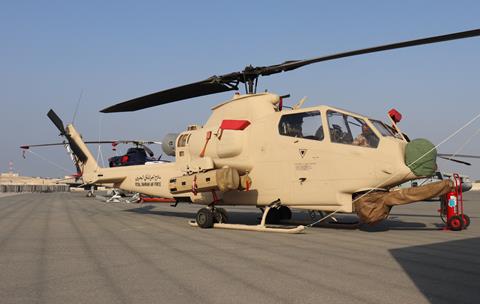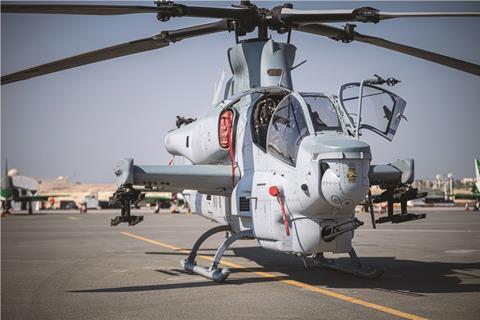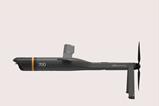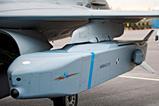Bahrain’s military fleet renewal could be set to advance further, with a potential acquisition of ex-US Marine Corps (USMC) Bell AH-1W Super Cobra attack helicopters still in the mix.
An existing operator of legacy E/F-model Cobras, the Royal Bahraini Air Force (RBAF) has already significantly enhanced its capabilities via the introduction of 12 AH-1Z rotorcraft. Now fully operational, the last of the new assets were received last year.
In March 2023, the US Defense Security Cooperation Agency outlined a request from Manama to field 24 retired AH-1Ws, valuing a deal at an estimated $350 million.
“The government of Bahrain has requested to buy equipment and services to refurbish 24 excess defense article AH-1W helicopters,” it said at the time. The process is expected to involve using 31 stored aircraft.

The RBAF’s current inventory includes 22 AH-1E/Fs, plus eight P-model trainers. While the fleet has been the subject of an upgrade activity performed by Turkish industry, replacing them with the W variant would represent a significant increase in capability.
“It is a testament to how these aircraft were built, with them being able to continue flying and maintaining them for as long as they have,” Bell H-1 programme director Scott Sims says of the legacy model’s longevity in RBAF service.
The USMC retired its final AH-1Ws in 2020, having replaced them with more capable AH-1Zs.
“Getting these aircraft back up to a flying capability is something that Bell absolutely can do as the OEM, and we’d be more than interested to partner with the BDF [Bahrain Defence Force] and the United States government,” Sims told FlightGlobal at the Bahrain International Airshow near Manama on 13 November.
Although this would be less lucrative than producing additional new-build AH-1Zs, he notes: “Aircraft flying for Bell is a good thing. We provide many service and sustainment options.”
Meanwhile, “All indications are that they love their aircraft,” Sims says of the RBAF’s newly-fielded AH-1Zs, which also are supported by an in-country flight training device. “Their maintenance and operational crew are fully ready, and they are up flying the aircraft day-in and day-out,” he adds.
“The BDF has learned fast”, he says of the nation’s ability to operate and maintain the new model to the highest standard, while adding: “they are pristine aircraft”.

Bell has also completed deliveries of four AH-1Z Vipers and eight UH-1Y Venom utility helicopters to the Czech Republic. It has 12 examples of the attack helicopter on order for Nigeria, with a contract having been signed earlier this year.
Slovakia has also previously expressed interest in potentially ordering the same number of AH-1Zs, and a letter of offer and acceptance was recently delivered to advance the potentially $600 million deal.
“There are a lot of customers that are very interested” in the company’s H-1-family products, Sims says, with additional orders to potentially include follow-on interest from existing users.
“Someone who has a Zulu [AH-1Z] today may want a Yankee [UH-1Y] tomorrow,” he notes. The company produces the aircraft – which feature 85% commonality between the two models – at its Amarillo site in Texas.
Meanwhile, Sims says Bell is making good progress with a major H-1 modernisation activity being conducted for the USMC. Dubbed the Structural Improvement Electrical Power Upgrade, this will lay the foundations for the possible future integration of additional weapons and air-launched effects, ensuring the type’s continued operational relevance.































